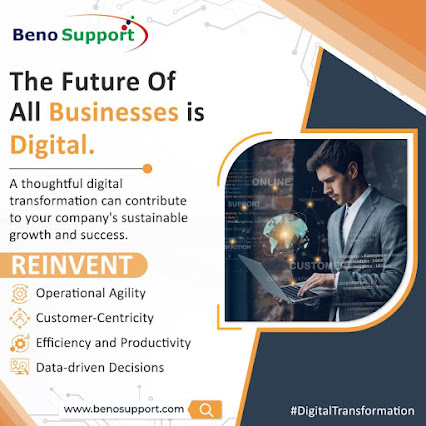The Digital Transformation Journey: Steps to Modernise Your Business
In today's rapidly evolving digital landscape, businesses that fail to embrace change risk getting left behind. This is where Digital business transformation comes in. It's the strategic process of leveraging Digital Transformation Technology to fundamentally alter how your organization operates, delivers value, and interacts with customers.
This blog post will serve as your guide on this exciting journey, outlining the key steps to modernize your business and achieve lasting success.
Understanding Your Starting Point
Before embarking on any transformation, it's crucial to understand your current state. Conduct a thorough assessment of your:
Digital Maturity: Evaluate your existing technology infrastructure, processes, and digital adoption levels across departments.
Customer Needs: Analyze customer behavior, pain points, and evolving expectations. Identify areas where you can provide a more personalized and seamless experience.
Business Goals: Define your vision for the future. What are your goals in embarking on a digital transformation journey? Increased efficiency? Enhanced customer engagement? Improved product development?
Charting Your Course
With a clear understanding of your starting point, it's time to develop a strategic roadmap. This roadmap should:
Outline your digital transformation goals: Align your goals with your overall business objectives.
Identify key initiatives: Pinpoint specific projects and processes that will drive your transformation forward. Consider areas like cloud migration, automation, data analytics implementation, or the adoption of new collaboration tools.
Priorities initiatives: Focus on initiatives with the highest potential impact and return on investment (ROI).
Establish a timeline: Set realistic deadlines for each initiative to ensure progress and accountability.
Choosing the Right Tools
The Digital Transformation landscape is brimming with innovative technologies. Here are some key players to consider:
Cloud Computing: Shifting your operations to the cloud offers scalability, flexibility, and cost efficiency.
Artificial Intelligence (AI) and Machine Learning (ML): Leverage AI and ML to automate tasks, gain deeper customer insights, and personalize marketing campaigns.
Big Data Analytics: Unlock the power of your data to optimize operations, identify trends, and make data-driven decisions.
Internet of Things (IoT): Connect physical devices to the internet to collect real-time data and automate processes.
Building a Culture of Innovation
Digital Business Transformation transcends mere technological upgrades; it fundamentally involves people. Foster an environment that values innovation and ongoing education.
Leadership Buy-in: Secure strong leadership support to champion the transformation and foster a culture of change.
Employee Training and Upskilling: Equip your workforce with the skills needed to thrive in a digital environment.
Communication and Collaboration: Foster open communication and collaboration across departments to ensure everyone is aligned with the transformation goals.
Measuring Success
Track your progress by establishing key performance indicators (KPIs) aligned with your transformation goals. These KPIs can include:
Increased Revenue: Measure the impact of digital initiatives on revenue growth.
Improved Customer Satisfaction: Track customer satisfaction metrics to gauge the effectiveness of your digital transformation efforts.
Enhanced Operational Efficiency: Monitor changes in operational efficiency to demonstrate cost savings and productivity improvements.
The Digital Transformation journey is an ongoing process, but by following these steps, you can equip your business with the tools and strategies to stay ahead of the curve. Embrace change, invest in the right technologies, and empower your people to unlock the full potential of your Digital transformation journey.
.jpg)


Comments
Post a Comment